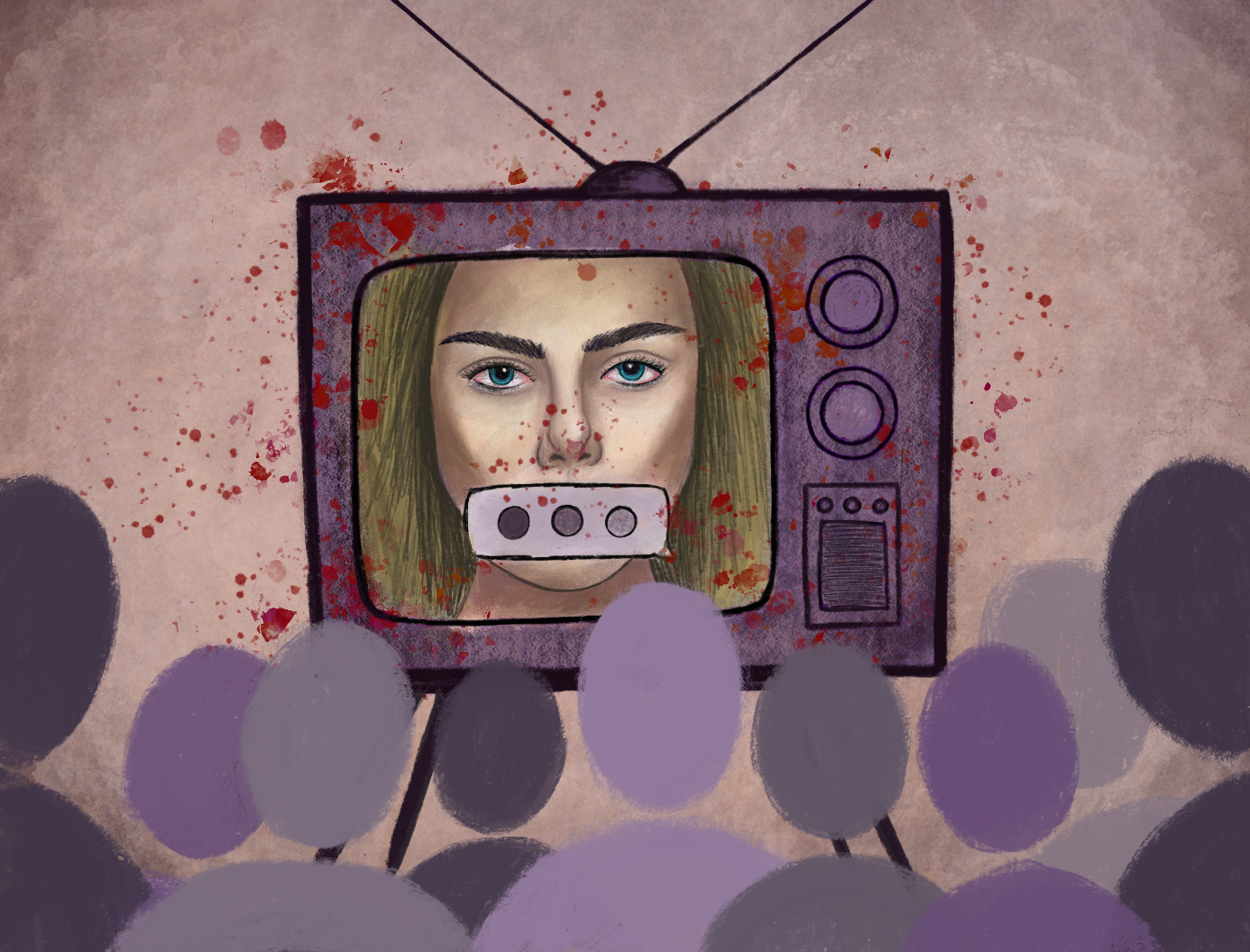Second Take: Studios fail to uplift people of color in true crime miniseries

(Megan Fu/Daily Bruin)
By Breanna Diaz
March 31, 2022 3:49 p.m.
Entertainment’s fascination with true crime may be crossing the line when turning fact into fiction.
In the past few months, streamers and studios have been producing miniseries after miniseries that chronicle true crime cases, most of which are well-received by audiences. But what shows such as Netflix’s “Inventing Anna” and Hulu’s “The Dropout” and “The Girl From Plainville” have in common is their focus on white female criminals telling their sides of the story. With the primary goal of entertaining an audience, dramatized true crime shows offer up a humanized – and at times sympathetic – view of controversial heroines, but rarely are cases involving people of color explored at this level.
The latest case to get the miniseries treatment is that of Michelle Carter, the teenager who made national headlines after she repeatedly encouraged her boyfriend Conrad Roy III to commit suicide. “The Girl From Plainville,” which was released Tuesday and stars Elle Fanning as Carter, intends to explore teenage mental health issues while presenting an unseen side of Carter’s story.
While the intention of the series to dive into topics of mental health is commendable, “The Girl From Plainville” still affords Carter a level of understanding that doesn’t seem to extend to people of color who are convicted of crimes. Series executive producer Liz Hannah said in an NBC News article that she and co-showrunner Patrick Macmanus saw Carter’s story as an opportunity to explore her situation with empathy.
The world of true crime, inundated with podcasts, documentaries, Twitter threads and YouTube videos picking apart case after case, falls victim to “missing white woman syndrome,” a term coined by journalist Gwen Ifill. The phenomenon refers to the media storm that follows when a white woman is missing or endangered, such as with 22-year-old Gabby Petito’s highly-publicized disappearance last year.
While any missing persons case is serious, sociologist Zach Sommers’ study on media coverage for missing persons confirms the disproportionate attention white women receive over missing people of color, noting that missing white women receive far more intense media coverage. Granted, “The Girl From Plainville” is not about a missing person, but the case it’s based on had all the elements to become popular – salacious texts, a controversial court case and a young white woman.
These days, it’s easy to name a true crime series with a white female lead, but few titles exploring cases about people of color come to mind. Salient examples such as Netflix’s “Narcos” exist, which follows the rise of Colombian drug trafficker Pablo Escobar. Through this retelling of mostly-true events, the series does not intend to justify any of Escobar’s crimes but rather elevates the Drug Enforcement Administration agents who helped track him down in a relatively cut-and-dry story of justice.
However, studios such as Netflix and Hulu know there is money to be made from star-studded, glamorized miniseries about crime. The former went to great lengths to produce “Inventing Anna,” paying the convicted larcenist Anna Sorokin $320,000 for the rights to turn her story into a TV series. Although laws prevent Sorokin from profiting from her crimes, Netflix’s payout allowed her to settle legal fees and fines.
When adapting real-life cases into dramatized entertainment, true crime content can create emotional bonds with audiences, offering to them rationalizations and justifications for criminal behavior through backstory and first-hand perspectives. And by sharing the stories of people such as Elizabeth Holmes, Sorokin or Carter over several hour-long episodes, audiences are encouraged to give up large amounts of time to hear them out. In contrast to documentaries, which typically inform an audience about a case from a more neutral perspective, dramatized true crime shows bend reality for the sake of character and story.
The abundance of dramatized shows dissecting crimes committed by white people through an empathetic lens suggests a lack of diversity throughout the film industry. UCLA’s 2021 Hollywood Diversity Report, which examines the state of diverse representation in film and television, found that people of color are underrepresented as show creators, leads and writers. Without a diverse range of voices and talent in film and television, entertainment may continue to be homogenous in its casting and repetitive in its subject matter.
With no limit to what can be turned into a television show, it’s time studios uplift stories about people of color too.

